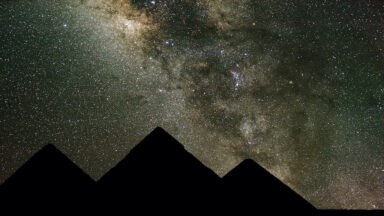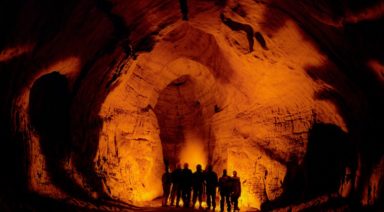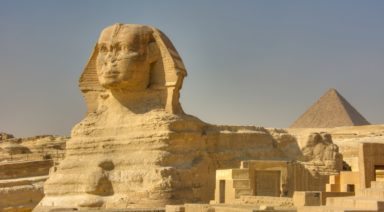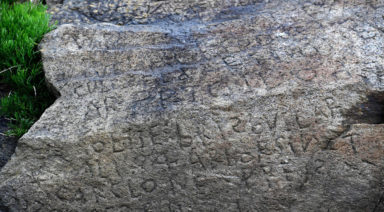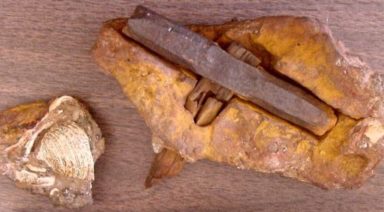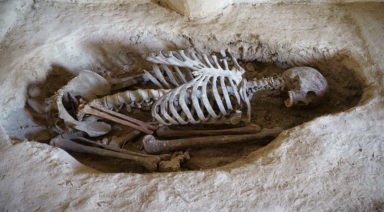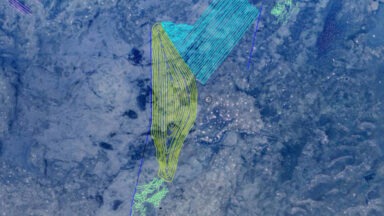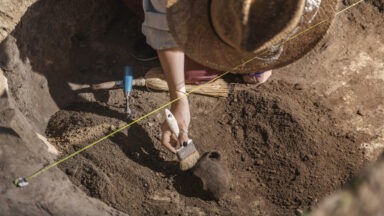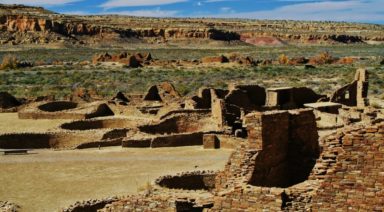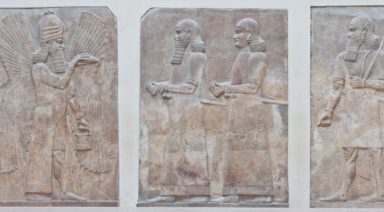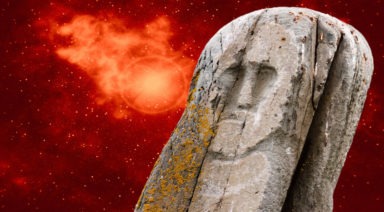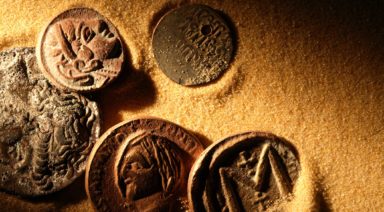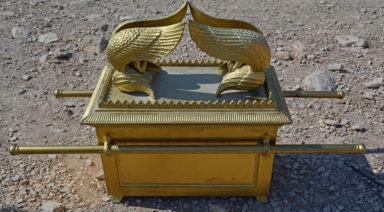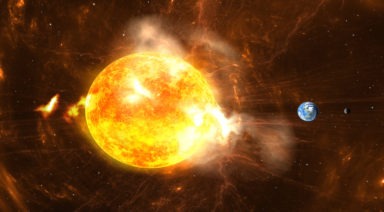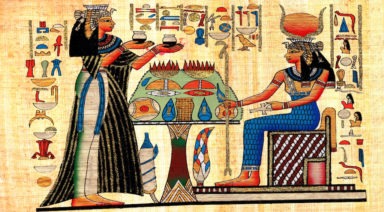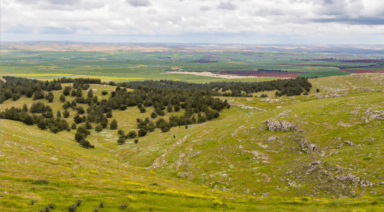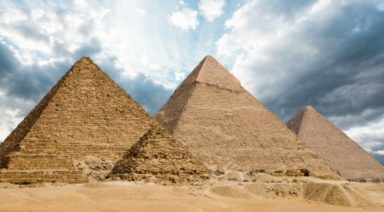Who Built the Great Sphinx?
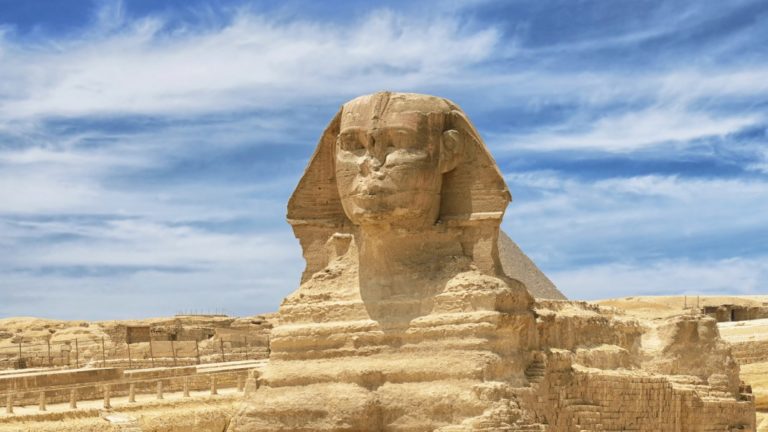
The Great Sphinx is an iconic piece of history that’s just as remarkable as it is mysterious. From its enormous size to its intricate detail, it’s nothing short of an astounding architectural feat.
Who built the Great Sphinx and why? How, exactly, was such a large-scale and magnificent structure constructed? What is the significance of the Sphinx — a mythical creature with a lion’s body and a human face?
While there are plenty of questions, one thing is certain: The Great Sphinx offers no shortage of details to explore.
Mystery of the Sphinx
The Great Sphinx in Giza, a city in Egypt that features other prominent monuments such as the Great Pyramids, measures 66 feet high and 240 feet long. It is, by far, the largest sculpture of the ancient world. It is made of various blocks of limestone that weighed up to 200 tons each.
Scholars have long held the belief the Sphinx was constructed for the Pharaoh Khafre, who reigned from approximately 2,520 to 2,494 BC. This could explain why the Sphinx seems to align geographically with the Pyramid of Khafre, where the pharaoh himself is buried, and a temple, which is located due east from the statue.
In contrast, some Egyptologists theorize the Sphinx was actually built by Khafre’s father, [King Khufu]http://www.guardians.net/egypt/sphinx/), or Khafre’s brother, Djedefre.
However, the age of the Sphinx is still up for debate, and a growing body of evidence suggests it may be even older than once thought — so old, in fact, the Sphinx may not have been constructed by the Egyptians.
Weathering
Researchers such as John Anthony West and R.A. Schwaller de Lubicz observed signs of weathering due to rainfall on the Sphinx, dating the construction of this marvel to the end of the last Ice Age, about 10,000 to 5,000 BC. While some weathering due to wind erosion is to be expected over the course of such a long time period, this particular type of weathering suggests the Sphinx was constructed at a time in which Egypt was not such a dry, barren environment.
Geologists confirmed that long, long ago Egypt was subjected to a period of flooding. During this period, the Sphinx was most likely covered in sand, which would have preserved its construction and protected it from wind erosion for many years. This is further supported by Napoleon’s rediscovery of the ancient structure in 1798, in which the Sphinx was buried up to its neck in sand.
Lion Symbolism
The Sphinx is depicted as a lion with a human head, which some speculate is a tribute to the constellation of Leo. However, it’s also curious to note the Sphinx and its alignment with the Giza pyramids and the Nile River closely mirror the orientation of Leo, Orion, and the Milky Way.
Graham Hancock and Robert Bauval, the researchers who made this observation, state this pattern represents the orientation of the aforementioned celestial bodies during the astrological Age of Leo, which occurred between the dates 10,970 and 8810 BC.
Who Really Built the Sphinx?
Longstanding theory suggests slaves built the Sphinx and the Great Pyramids using some sort of pulley system.
However, all of the aforementioned factors and more lead some to believe the Great Sphinx may have actually not been constructed by the Egyptians at all.
Zecharia Sitchin, a prominent ancient astronaut theorist, hypothesized the Annunaki constructed the Sphinx. These intelligent beings allegedly built the structure in a precise geographical location close to where they purportedly had spaceports on Earth. The alignment of the Sphinx and the Great Pyramids also mirrors that of pyramid-like structures found on Mars, possibly suggesting Giza served as a landing strip for spacecraft.
During a quest to discover the actual age of the Sphinx, John Anthony West and his team uncovered more than they had initially anticipated. Several underground cavities and tunnels were discovered beneath the structure, including a large chamber some 25 feet beneath the statue’s front paws. This is another piece of evidence that correlates to the Annunaki, who allegedly built sprawling underground structures and dwellings.
So who really built the Sphinx? No one can be completely sure, but there is certainly no shortage of fascinating details to explore and examine.
Want more like this article?
Don’t miss Ancient Civilizations on Gaia to journey through humanity’s suppressed origins and examine the secret code left behind by our ancestors.
The Tall, Red-Headed Demi-Gods From Orion
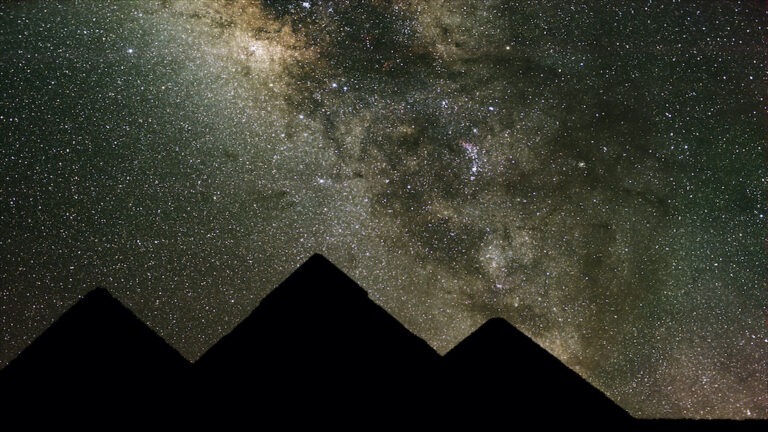
Humans through millennia have gazed into the night’s sky at Orion’s three outstanding stars. Among them was the Greek poet Homer who made mention of the constellation in the Odyssey;. the writers of the Old Testament referenced Orion in two of its books, Job and Amos; and the Egyptian mathematician Ptolemy, who cataloged Orion in his astronomical studies.
Named after the Greek hunter, the constellation of Orion is one of the most famous of all constellations, with nearly every ancient civilization forming an affinity to it from the Middle East to Africa and across the Americas. It is even said that the ancient Egyptians and Mayans used the three stars of Orion’s belt as a guide for positioning the pyramids, to mimic what they had seen in the heavens above.
And modern-day researchers, including Freddy Silva, are putting together the pieces embedded in the myths of the ancient world, asserting that the “gods” descended from the belt of Orion, came to Earth, and became our ancestors.
Many have questioned the origins of humans on Earth, as there seems to be no definitive starting point, but several researchers, such as Graham Hancock, Freddy Silva, and others, have concluded that mainstream science is way off the mark.
Silva cites several interesting sites and cultures that point to extraterrestrial origins of the human race, and his evidence is worldwide. The gods, Silva suggests, may have been more literal than mythical. A god, he says, “was considered any being who had control over the laws of nature… a god is a force of nature.” The gods who descended from Orion and came to planet Earth were human-like, but not quite human.
Much of this mystery has to do with the great flood occurring around 12,000 years ago that is written about in the oldest literature of myriad cultures. Following the flood, the gods seem to have moved on from this world, leaving their children behind to procreate with human women. The offspring were known as Nephila, translating to “the children of Orion.”


